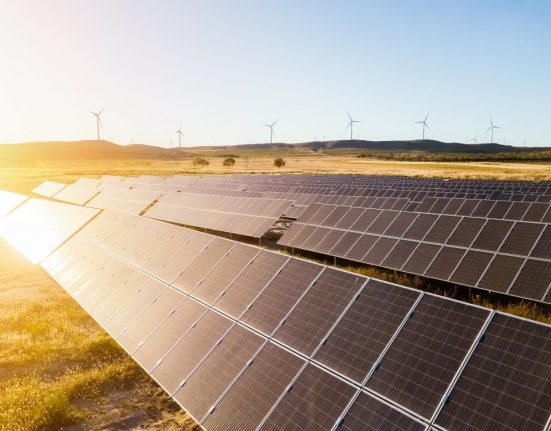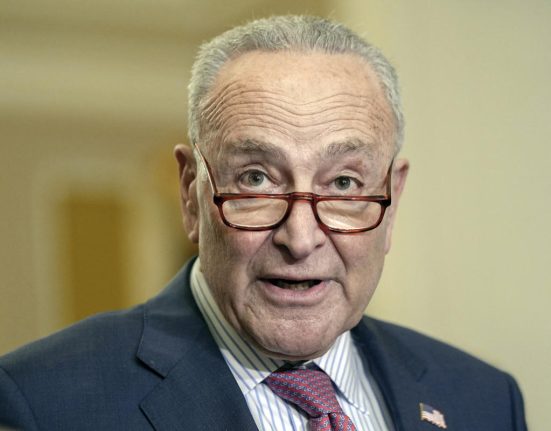Billions in Inflation Reduction Act funding is about to supercharge home energy improvements for American households.
An electrician installs a residential heat pump
A diverse group of twelve Red and Blue states are tapping into their share of nearly $9 billion in federal Home Energy Rebates to fund energy efficiency, electrification upgrades, and new appliances through state energy offices. New incentive programs will help pay for energy upgrades for low- to moderate-income households, multifamily housing, and those living in historically underinvested communities – cutting energy costs and toxic indoor air pollution.
All state and tribal governments can apply to the U.S. Department of Energy for funding to provide rebates for residents to install clean technologies like heat pump HVAC systems, heat pump water heaters, and insulation. The first wave of state applicants are bipartisan, showing affordability and public health aren’t Red or Blue issues – they’re just common sense.
Inflation Reduction Act (IRA) federal home electrification and appliances rebates
New York is the first state to get approved and will receive $158 million for its Home Electrification and Appliance Rebates Program but Arizona, California, Colorado, Georgia, Hawaii, Indiana, Minnesota, New Hampshire, New Mexico, Oregon, and Washington will soon receive their share. Wisconsin is queued up for action as well.
Rebate recipients will get relief from inflated energy prices and spiking energy bills, and local economies will get stronger as the building sector trades hire new workers to complete energy retrofits. And with $200 million available for workforce training efforts via Home Energy Efficiency Contractor Training Grants, states can simultaneously expand their workforce to meet growing demand for efficient, electrified home energy technologies.
Home energy rebates help households struggling with energy poverty
One in seven U.S. families live in energy poverty. These households pay a disproportionately high amount of their income on energy bills, relative to other critical expenditures, like food and health care. Although states vary in the number of households experiencing high energy burdens, no state is immune from this problem. Volatile fossil fuel prices have spiked inflation and increased energy costs, forcing more households than ever to struggle with energy expenditures.
Average energy burden among extremely low-income households in The United States
Fortunately, the Inflation Reduction Act’s rebate programs will counteract the impacts of fossil fuel volatility. $4.5 billion was allocated to states through Home Electrification and Appliance Rebates for energy-efficient, all-electric appliances and equipment. Rebate amounts vary by upgrade, housing type, and household income. Households with an income at or below 80% of the area median income can receive up to 100% of project costs up to $14,000. Households with an income between 80% and 150% of the AMI are eligible for the lesser of 50% of project costs up to $14,000. The remaining $4.3 billion of federal funds will go toward Home Efficiency Rebates that can be applied to a range of retrofit measures and packages. Incentive amounts are calculated based on measured or modeled energy savings, and they vary by housing type and household income, based on AMI.
Range of energy savings for single-family, multifamily, and low-income households
States can choose to apply for both programs, and some are opting for a one-at-a-time approach to get things moving quickly. It’s worth noting that all states with applications submitted have applied for funding from the electrification and rebate programs.
States on the Move
New York’s program will initially focus on low-income households to ensure money for energy upgrades goes first to people most in-need. The program will provide up to $14,000 per household for upgrades such as energy efficient heat pumps for heating and cooling, heat pump water heaters, home insulation and air sealing, and other upgrades such as electric cooking appliances that improve indoor air quality and public health. The program is expected to launch by summer 2024.
New York’s established history of collaborating with home energy contractors and other private sector partners, through programs like the Clean Heat Connect program, helped them move quickly to the front of the line for funding approval. Building on the successes of existing programs meant the state was quickly able to apply for new funding to further accelerate deployment of energy-saving technologies.
Some of the states that submitted applications or are working to develop their applications are facing real challenges of program development and implementation, such as limited staffing or requirements for gubernatorial, legislative, or commission approval before proceeding. For example, the Wisconsin Public Service Commission considered their rebate applications as part of a recent hearing—the Commission’s approval is a first step for the state to move forward with their application.
New Mexico was the first state to submit its applications to the DOE for both the Home Efficiency Rebates and Home Electrification and Appliance Rebates programs. Given the higher rate of energy burden in the state, such federal funds could be gamechangers for the state’s residents.
In the coming weeks and months, the DOE will continue working closely with state energy offices and tribal governments as they navigate rigorous application processes. States have until January 2025 to submit their applications, but states that fail to apply will forfeit their funds to other states. Tribal governments have more time submit their applications, and many are working closely with state entities to ensure close alignment.
Targeted resources can aid program development and implementation.
For states still working through the details, Energy Innovation’s Inflation Reduction Act Home Energy Rebates: Program Guidance for State Energy Offices outlines seven important design principles to enhance the success of these rebate programs, such as utilizing data to inform program design strategies, providing hands-on support to consumers and contractors, and striving for durable market momentum. Case studies from existing energy efficiency and electrification programs show states proven ways to solve similar challenges.
Program design principles for effective and efficient electrification retrofits
The time is now for states and tribal governments help people save energy and money
Efficient home energy upgrades will reduce the strain of energy burden on U.S. households, cutting costs and toxic air pollution at home, while spurring housing stock investments and expanding local workforces. All states and tribal governments are eligible to apply for home energy rebate program funding, but state agencies and elected officials must take swift action to prioritize this effort.
For states that don’t tap this generational opportunity, leaving money on the table doesn’t mean they’ll be returned. Instead, a neighboring state will receive even more money while their constituents will be stuck with the bill.
Affordability is front of mind for all Americans. The Inflation Reduction Act’s home energy rebate programs are a proven way to help people save money, create new jobs, and spur and economic investment.







